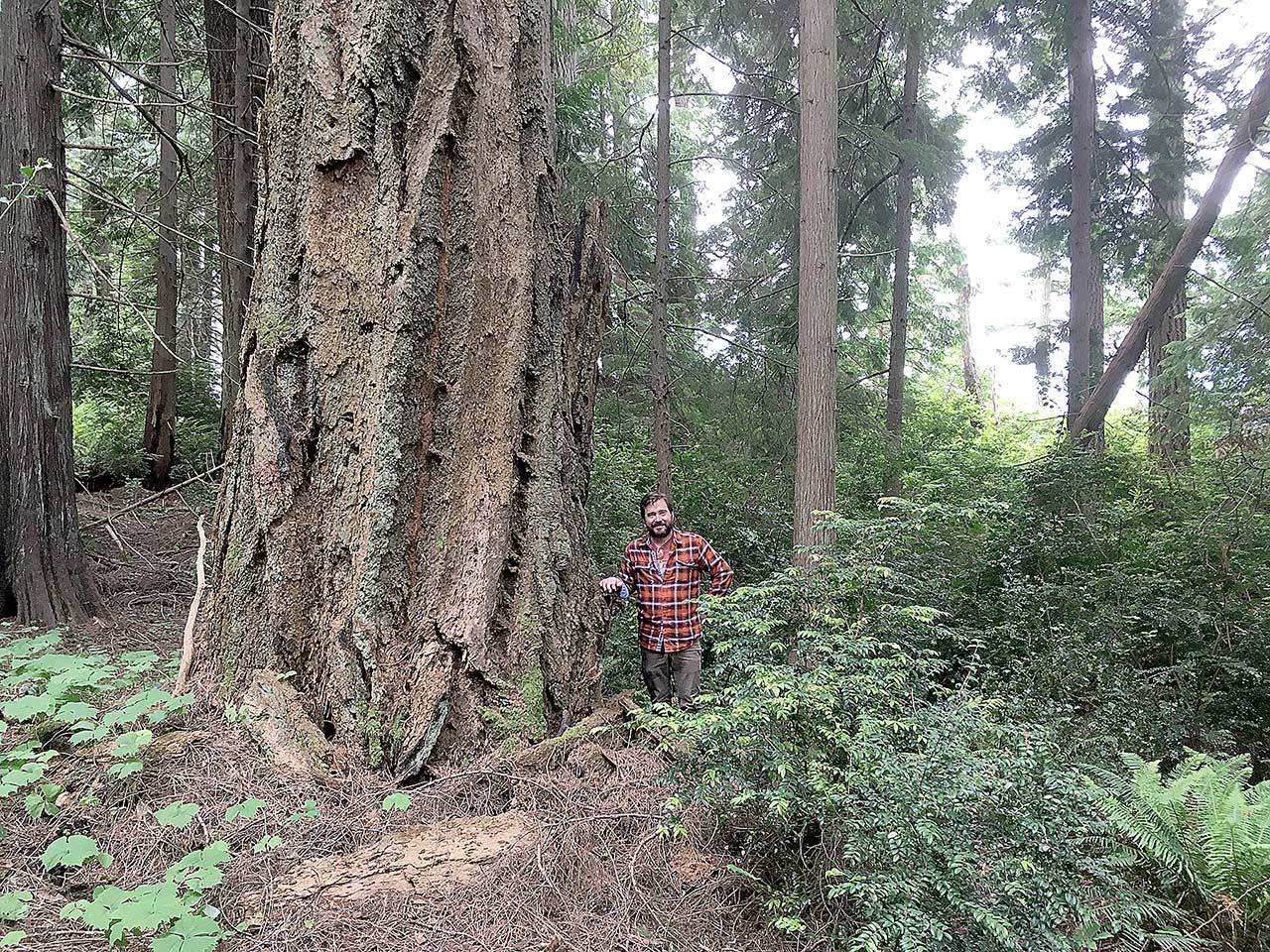COYLE — A coalition of conservation groups, shellfish farmers, tribes and area residents is asking the state Department of Natural Resources to cancel plans for three timber sales to protect a rare rhododendron forest.
The 936-acre forest on the Toandos Peninsula and along Dabob Bay is the largest in the world, according to Peter Bahls, executive director of the Northwest Watershed Institute, a Jefferson County-based group that has been coordinating Dabob Bay conservation efforts for nearly 20 years.
“It’s only fitting that, in Jefferson County, which has been celebrating the Rhododendron Festival since 1936, we are now potential guardians of the most significant native rhododendron forest of its type remaining in the world,” Bahls said.
A Zoom meeting is set for today with DNR representatives to discuss a request to expand the boundaries of the Dabob Bay Natural Area to include this rare forest as well as another one in the area.
Replacement timber property would be needed so as to maintain revenue for junior taxing districts within the area, DNR spokesman Kenny Ocker said on Friday.
DNR Heritage botanists have already identified two rare plant associations in the area, Bahls said in a press release.
Most of the areas of rare forest discovered are a type that includes iconic native rhododendron, he said. This forest type is defined by having a Douglas Fir overstory, Western Hemlock understory and evergreen huckleberry and rhododendron below.
“The plant species themselves are not rare,” Bahls said. “However, finding high-quality, relatively undisturbed forests with this combination of plants is exceptional, because most have been logged or developed.
“These ‘Heritage Forests’ are the last remaining examples of a native forest type that was once common only in the lowlands of Puget Sound,” he continued.
The second rare forest type is similar, but it does not include rhododendron.
These two forest plant associations only occur in Puget Sound, and both types are listed as “G2” or “globally imperiled” in the international classification system of plant associations used by DNR’s Natural Heritage program, Bahls said.
A boundary expansion is not regulatory, but it would allow DNR to transfer the state timber lands into a permanently protected status and seek reimbursement for the timber trusts as well as allowing private landowners within the proposed Natural Area the option to sell their land on a voluntary basis to DNR for the purpose of preserving it, Bahls said.
The forests are within DNR trust lands, which are managed by the state to provide revenue for the schools and other junior taxing districts in that area, Ocker said.
“We have a legal obligation to manage these lands for various trust beneficiaries. All of that revenue is designated to specific beneficiaries,” Ocker said.
“It takes an act of the state Legislature or private funding to move lands from trust to conservation status,” he added.
“Somebody would have to fund the conservation of those lands to allow us to acquire replacement property elsewhere” before the timber sales were canceled and the land put into a protected area, Ocker said.
No auctions have been held for the three proposed timber sales, he said, including the first one — the Coyle Sorts — which has been placed on hold.
DNR expanded the boundaries of the Dabob Bay Natural Area previously in 2009 and 2016 after public hearings in Quilcene.
When a rare plant association is identified, professional botanists from the state Department of Natural Resource’s Heritage Program conduct a detailed field assessment to measure its extent and rank its quality, Bahls said.
They investigate historic impacts to the forests, such as previous logging and road construction, as well as the size of the grove and extent of invasive species.
Only relatively undisturbed groves assessed by DNR’s Natural Heritage Program to be of the highest quality make the cut as “Element Occurrences” that are a high priority for protection, Bahls said.
The proposed expansion of the Dabob Bay Natural Area would include all of the rare forests identified by DNR, as well as unique stand of older forest along the shoreline of Dabob Bay, with scattered old-growth trees that appear to be over 400 years old and is classified as S1 or “critically imperiled,” the highest priority at the state level for conservation, Bahls said.
This past summer and fall, Northwest Watershed Institute hosted weekly tours of the imperiled forests for local residents of the Coyle and Dabob area and organized a socially distanced outdoor meeting at the Coyle Community Center in September.
“Community support for protecting the Toandos Heritage Forests is very strong,” said Mary Jean Ryan, who has started a petition to the Hilary Franz, the state commissioner of public lands, and the three Jefferson County commissioners.
“Despite terrible smoke and the pandemic, the community turned out to focus attention on the urgent need for forest conservation,” she continued. “People out here know we have to protect forests and the whole Dabob Bay ecosystem.”
The petition at https://tinyurl.com/PDN-HeritageForests had gathered 1,520 names as of Sunday.
Thirteen conservation groups, including the Jefferson Land Trust, Olympic Forest Coalition and The Nature Conservancy, have sent a joint letter to DNR asking that the area be protected, Bahls said.
He added that the Jamestown S’Klallam Tribe and Port Gamble S’Klallam Tribe also have written letters urging expansion of the Dabob Bay Natural Area as well as three shellfish companies: Rock Point Oyster, Baywater Shellfish and Taylor Shellfish.
The Dabob Bay Natural Area was initially established in the 1980s to protect some 350 acres of the coastal saltmarsh spits between Tarboo Bay and Dabob Bay.
Since then, it has grown to protect about 7,656 acres of saltmarsh, shorelines and forested slopes, including both Dabob and Thorndyke Bays.
Within that boundary, DNR and partners have protected about 4,265 acres, purchasing dozens of mostly undeveloped parcels from willing private owners, Bahls said.
________
Executive Editor Leah Leach can be reached at 360-417-3530 or at lleach@peninsuladailynews.com.

